

To make it easier to find the speakers, they are arranged according to the postcode of their place of residence. To view the lecture topics, open the green triangle. Alternatively, you can download the complete list of speakers as a PDF.

Dresden University of Technology
Bioanalytical Chemistry
01062 Dresden
Reiner Salzer
The world's first professorship for chemistry was established in Marburg in 1609. European students and professors were already astonishingly mobile. In the 19th century, chemistry became an important driving force in industry and science. In Germany, chemistry did not become an independent branch of science until the 20th century. The lecture will discuss the development of the subject of chemistry in Europe up to the 20th century.
Target group: teachers, students in advanced courses, chemical specialists in training, German Young Chemists Network - Duration: 60 min
The working situation of chemists in Europe
Employment conditions and career opportunities were the focus of the survey of European chemists. The results provide important information for many EU countries and for Europe as a whole. The requirements of the job market for chemists differ significantly between countries. This is important for career planning, and not just for students and graduates.
Target group: teachers, students in advanced courses, chemical specialists in training, German Young Chemists Network - Duration: 60 min
Horst Hartmann
Internet: http://www.chm.tu-dresden.de/farbstoffsammlung.shtml
Dyes through the ages | The history of the dyes from "Ancient Purple" to the "solar cell" is presented. Duration: 45-60 minutes. Target group: teachers, high school students and the school community, German Young Chemists Network, members of technical, scientific and artistic training institutions |
The Dresden Dye Collection - contemporary witness to the development of the chemical industry over the last 150 years |
Presentation of over 10,000 dye samples from 80 different manufacturers from 1850 to today. Duration: lecture and visit to the collection approx. 90 minutes. Target group: teachers, students from 6th grade and high school Seniors, interested people from artistic and design professions, people interested in history, members of technical, scientific and artistic training institutions |
Dyeing with natural dyes |
Experimental lecture with practical exercises (only possible during semester breaks). Duration: half a day. Target group: teachers, students from 6th grade and upper secondary school, those interested in science and art |
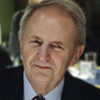
The lecture explains the terms important for measuring in chemistry:
- Metrology. The science of measurement
- The fascination of scales. Accuracy, precision and the prototype kilogram
- World Metrology Day 10 May 2019. Reorganization of the system of measurement units
- Metrological principles. Reliable standards, prototype kilogram and recognized reference materials
- Measurement uncertainty. Measurement uncertainties and the accuracy of measurements
Target group: Teachers and students of advanced science courses as well as the school community - Duration: 45 – 60 minutes
The lecture covers the following important terms in chemistry:
1. Similarity, equality, identity
2. Element
3. Analyte. The selectivity of the procedure determines the identity of the analyte.
4. Standards. Measurement, calibration and reference materials
5. Symmetry. Description of molecular symmetry and stereoisomerism
6. Isomerism. Certain properties define the group membership. Hierarchy of the terms isomers, stereomers and chiramers.
7. Topia. Classification of topias according to K.Mislow and M. Raban.
Target group: Teachers and students of advanced science courses as well as the school community - Duration: 45 – 60 minutes
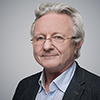
MOL Catalyst Technology GmbH
Leunastrasse 06
Jürgen Koppe
From the emergence of technical chemistry and the concept of catalysts around 1600 (Libavius) to modern chemistry around 1900 (Ostwald).
History of chemistry, heterogeneous catalysis, 1st and 2nd laws of thermodynamics, chemical equilibrium, irreversible processes, kinetics, activation energy, technical applications.
Target group: Teachers and students of advanced science courses – Duration: 45 - 60 minutes
Paracelsus' life and significance for chemistry today. Development and application of chemical models from the Middle Ages to the present day - from genius to engineer. Importance of personal appearance for the acceptance of scientific views, development of chemical models as an interaction between theory and practice, 1st and 2nd law of thermodynamics, acid-base theory, technical applications.
Target group: Teachers and students of advanced science courses – Duration: 45 - 60 minutes
Hydrogen bonding, dipole molecules, dissociation, acid-base theory, mesomeric energy, activation energy, 1st and 2nd law of thermodynamics, entropy and enthalpy, free reaction enthalpy, irreversible processes, chemical equilibrium, kinetics and catalysis, technical applications.
Target group: Teachers and students of advanced science courses – Duration: 45 - 60 minutes
The three-hour workshop will cover the following topics:
Experiments and knowledge transfer
Knowledge quiz to test the knowledge imparted (with small prizes)
Target group: Students in grades 10 to 12

Historical outline of the development of modern non-ionic X-ray contrast media (XCM) based on organic iodine compounds – physicochemical requirements for intravenously administered agents (absorption of X-rays, water solubility, viscosity, tolerability) – chemical aspects of synthesis in the laboratory and in upscaling (annual ton production) – areas of application (angiography, imaging of soft tissues, etc.) – barium sulfate as an oral contrast agent – alternatives to iodine as a signaling element? - X-ray contrast media in the environment
Duration: 45 minutes
Target group: Teachers and students of upper secondary schools
Principle of MRI – paramagnetic gadolinium ion as a signal generator – intravenously administered metal chelates as compatible pharmaceuticals – open-chain and macrocyclic Gd complexes – thermodynamic / kinetic stability – organ-specific contrast media (CM) – insights into the world of interdisciplinary pharmaceutical research in the search for new in vivo diagnostics – discussion about the safety of CM.
Duration: 45-60 minutes
Target group: Teachers and students of upper secondary schools
Overview lecture introducing the different techniques of modern clinical imaging (CT, MR, PET) with a focus on the contributions of the (industrial) chemist to the interdisciplinary discovery of intravenously applicable clinical contrast agents or PET tracers.
Duration: 45-60 minutes
Target group: Teachers and students of upper secondary schools
Institute of Chemistry
Humboldt University Berlin
Brook-Taylor-Strasse 2
D-12489 Berlin
Stefan Hecht
Internet: www.hechtlab.de
Chemistry in Computers | Target group: Students, teachers and the school community |
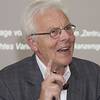
Free University of Berlin
Institute of Chemistry and Biochemistry
Takustrasse 3
D-14195 Berlin
Klaus Roth
www.klausroth.de
Sugar substitute. Instead of a chemical success story of sweeteners, a drama begins whose plot is determined by economic interest groups, tax legislation, the market, wild gangs of smugglers and the spirit of the times. But also a strong pinch of gripping chemistry. Let's take a closer look at the 10 sweeteners approved in the EU today and enjoy the agony of choice.
Target group: Students, teachers and the school community – Duration: 45-60 minutes
Around 1700, Berlin was a hive of activity. Bright minds were recruited from all over Europe and flocked to the city. They were welcome, no one asked about their religion, they were allowed to try their luck. Although alchemy had already passed its zenith, it reached its peak in popularity. A colorful startup scene developed in the city, and in 1706, the discovery of the century was made in Prussian blue. From the very beginning, many legends and stories were associated with this. Let's reopen the case and finally close it, thanks to new research into the history of chemistry.
Target group: Students, teachers and the school community – Duration: 45-60 minutes
When a violin virtuoso enchants us with the sound of his Stradivarius, we think he is very, very far removed from chemistry. This is deceptive, because chemistry played and continues to play an important role in Stradivarius' workshop, in the strings, the bow and the care of the instrument. So let's listen to the sound of a Stradivarius with a chemical ear.
Target group: Students, teachers and the school community – Duration: 45-60 minutes
Absinthe is in! After many decades of total prohibition, this drink has been allowed to be sold again in Germany for a few years. It was the favorite drink of the Parisian bohemians of the late 19th century. After a few glasses of absinthe, many gifted painters, musicians and poets hoped for the embrace and kiss of the Green Fairy, which would release unexpected bursts of creativity. What is behind it and can we still hope for the Green Fairy today? So let's get to the (chemical) reason behind it. À votre santé!
Target group: Students, teachers and the school community – Duration: 45-60 minutes
On the Isenheim Altar, Mathias Grünewald disturbs us with his imaginative depiction of the "Temptation of Saint Anthony" with a host of terrible demons who harass and torture the desperate saint from all sides. We are particularly moved by a cripple covered in boils who suffers unspeakable pain, the result of the widespread epidemic "St. Anthony's fire". It took centuries for this epidemic disease to be recognized as poisoning from the ergot fungus that grows on rye. Let us examine the disastrous influence that ergot poisons have had on the history of mankind.
Target group: Students, teachers and the school community – Duration: 45-60 minutes
Chocolate is a feast for all the senses: the silky dark brown, the wonderful cracking sound when you break off a small piece, the scent that brings back memories of childhood and finally the gentle melting on the tongue. The secret of good chocolate lies in the ingredients of the cocoa bean, which are chemically refined during fermentation and roasting. Heavenly pleasures can only be achieved with a strong dose of chemistry.
Target group: Students, teachers and the school community – Duration: 45-60 minutes
The condition of the sick is worrying: nausea, vomiting, trembling limbs, sweating, deathly pallor, headaches and poor circulation. Instead of compassion, the eyes of loved ones only flash with glee: "Was the 12th beer bad?", "Serves you right, you couldn't get enough." How can such a small molecule as ethanol cause so much human suffering? Let's explore the chemical consequences of a boozy evening.
Target group: Students, teachers and the school community – Duration: 45-60 minutes
Products from the chemical industry improve the quality of life of people all over the world. Consumers expect that the raw materials, manufacturing processes and end products meet the highest standards. But people of some religious communities expect even more: compliance with religious regulations throughout the entire manufacturing process. Let us study this unusual border area between chemistry and religion using Islamic and Jewish laws as an example.
Target group: Students, teachers and the school community – Duration: 45-60 minutes
Water is extraordinary and amazes with so many oddities that it is no wonder that scientists have long been struggling to understand this small molecule. In addition to the remarkable successes in researching the properties of H2O in all states of matter, water offers a huge playground for scientific nonconformists, naive amateur researchers and cunning business people. Let us shed light on the colorful and sometimes shrill world of water on both sides of the borders of exact science with goodwill, critical distance and a large portion of gallows humor.
Target group: Students, teachers and the school community – Duration: 45-60 minutes
“There is no nation, from the polar regions in the north to New Zealand in the south, in which the inhabitants do not tattoo themselves,” Charles Darwin stated in his “Origin of Species.” The current renaissance of tattooing is thus simply taking up a tradition that has been cultivated in many cultures for many centuries. As early as 2009, one in four Germans aged 25 to 34 had a tattoo, and in Europe over 100 million people had one. But what happens to our skin during and after color pigments are introduced into the deeper layers of the skin? Let's look at a tattoo from a chemical point of view right from the start.
Target group: Students, teachers and the school community – Duration: 45-60 minutes
Every year on the first Sunday of Advent, many kitchens are transformed into small bakeries where people make cookies and other baked goods together. Then the smell of freshly baked Christmas cookies, cinnamon stars, stollen and gingerbread wafts through the living rooms. No other festival is as closely linked to smells as Christmas, and this sensory impression remains a happy and longing memory for the rest of our lives. Let's follow the scent trail and try to find out its chemical basis. The effort will be rewarded, because with the new knowledge, the Christmas treats taste even better.
Target group: Students, teachers and the school community – Duration: 45-60 minutes
We humans are by no means biochemically perfect. On the contrary, we have to ingest many vital substances through food because our bodies cannot produce them themselves. If we lack these substances, we become ill. A lack of vitamin C hits us particularly hard, because then we get scurvy. It is not even 100 years since the molecular cause of this terrible disease was discovered and humanity was freed from it forever. A look back at the many trials and tribulations of the centuries-long fight against scurvy and in gratitude for the brave captains, Nobel Prize-winning chemists and physiologists and of course especially for the guinea pigs.
Target group: Students, teachers and the school community – Duration: 45-60 minutes
Espresso is harmless to health, stimulates the mind, does not make you fat and even has the papal blessing. Can you really ask for more? A cup of espresso is easy to prepare: 50 roasted and ground coffee beans are pressure extracted in an espresso machine. It's not that easy! There's a lot of chemistry behind it! Let's look at espresso from a chemical point of view and in the future we'll be able to sip the tempting crema with twice the pleasure.
Target group: Students, teachers and the school community – Duration: 45-60 minutes
People all over the world use plant species from the Capsicum genus to spice up dishes visually and in terms of taste. Hungarian, Mexican, Korean and Indian cuisine would be unthinkable without their characteristic spiciness. How does Capsicum manage to synthesize chemical compounds that irritate our tongue just enough for us to perceive it as a pleasant spiciness? Let's uncover the scientific background of the slowly diminishing burning sensation on the tongue and enjoy spicy dishes even more consciously in the future.
Target group: Students, teachers and the school community – Duration: 45-60 minutes

Gisela.Boeck
Internet: www.boeck.chemie.uni-rostock.de
Right and left play a role in many areas, whether in politics, art, botany or even chemistry. The spatial structure of the molecules can determine whether two molecules that look identical at first glance, for example, have a sweet or sour taste or produce different biochemical effects.
Target group: people interested in science, students from grade 11, teachers and school community - Duration: 45-60 minutes
Many people know Dmitri I. Mendeleev as the discoverer of the periodic table. In addition to his contributions to the establishment of this system, the lecture will also present his work on solution theory, petroleum, metrology and education.
Target group: Historically interested people, German Young Chemists Network, students from grade 9, teachers and school community - Duration: 45-60 minutes
The name Paul Walden is best known in connection with the Walden inversion, which plays a role in second-order nucleophilic substitution reactions at stereogenic centers. The lecture will report on Walden's biography and discuss his scientific achievements, which are by no means limited to organic chemistry.
Target group: Historically interested people, German Young Chemists Network, students from grade 11, teachers and school community - Duration: 45-60 minutes
In Germany, women were only allowed to enroll at universities at the beginning of the 20th century. The life stories of some of them who decided to study chemistry are presented.
Target group: Historically interested people, German Young Chemists Network, students from grade 11, teachers and school community – Duration: 45-60 minutes
Lothar Meyer made significant contributions to the periodic table. His considerations, which led him to the first periodic arrangement of elements as early as 1864, are retraced and his further thoughts on periodicity are discussed.
Target group: Historically interested people, German Young Chemists Network, students from grade 11, teachers and school community - Duration: 45-60 minutes
The National Socialist policy in the years 1933 to 1945 significantly influenced the development of chemistry in Germany. Jewish chemists were dismissed, and only some of them managed to escape abroad. In addition to presenting some of their fates, the impact on chemical research is discussed.
Target group: Historically interested people, German Young Chemists Network, students from grade 11, teachers and school community - Duration: 45-60 minutes
Runge, a chemist from the 19th century, studied coal tar intensively and isolated numerous compounds from it. He is often considered the father of chromatography because he observed that when different salt solutions were dropped onto absorbent paper, rings of different colors formed. Simple experiments can also be shown to younger students.
Target group: People interested in history, German Young Chemists Network, students from grade 11, teachers and school community; can also be arranged for primary school students by arrangement - Duration: 45-60 minutes
Functional plastics – secret helpers in everyday life | Target group: Students, teachers and school community |
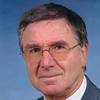
Target group: School community – Duration: 45 minutes
Target group: Students, teachers, school community – Duration: 45 minutes
Target group: Students, teachers, school community – Duration: 45 minutes
Video cassette (MDR recording)
Target group: Students, teachers, school community – Duration: 30 minutes
Facts and opinions on meat consumption
Target group: Students and teachers of upper secondary schools
Chemical structure, biosynthesis and physiological effects of this vitamin, requirements and prophylactic aspects in humans in the light of recent findings.
Target group: high school students, college students and chemistry/biology teachers – Duration: Approx. 30 - 40 minutes
Approximately 3-hour theoretical introduction to the structure, occurrence, requirements and coverage of critical vitamins
Target group: High school teachers of chemistry, biology and home economics – Duration: approx. 3 hours
Target group: High school teachers of chemistry, biology and home economics – Duration: 1.5 hours each
The chemical structure and physiological functions of important vitamins are explained. The focus is on the functions and possibilities of adequate intake using examples of the critical vitamins A, D, folic acid and B12.
Target group: high school students, students and teachers – Duration: 60 min
Both trace elements play a key role in metabolism. Their adequate intake in this country is considered critical. The health consequences of inadequate intake and the possibilities of meeting requirements are discussed.
Target group: high school students, students and teachers – Duration: 60 min

University of Wuppertal
Gaussstrasse 20
42119 Wuppertal
Michael Exchange
Chemistry plays a key role in the development of photoprocesses for other STEM subjects, too, because one of its characteristic features is the explanation of macroscopic phenomena using models at the (sub)microscopic particle level. In this sense, electronically excited states of molecules and other particle associations are common to all photoprocesses with and without chemical reactions. The fact that excited states can be used to teach chemistry, physics, biology, computer science and geography in a stimulating, efficient, sustainable and future-oriented way is discussed in the lecture and demonstrated using a number of experiments*. Experiments and other digital teaching/learning materials are available online on the Chemistry with Light internet platform.
Target group: Students, teachers and school community - Duration: 45-60 min
The lecture will explore the path to artificial photosynthesis using model experiments*, in which essential elementary processes and energy conversions in the natural photosynthesis-cellular respiration cycle are initially simulated. The direct, light-driven production of hydrogen without the detour via photovoltaics and electrolysis will then be demonstrated experimentally*. This will introduce one of the future scenarios for sustainable "green chemistry" based on climate-neutral, photocatalytically produced solar hydrogen. See also films on the University of Wuppertal's " Chemistry with Light " internet platform.
Target group: Students, teachers and school community - Duration: 45-60 min
In the lecture and workshop, didactically concise experiments will be used to explore how photons and molecules combine, separate and transform. In keeping with the experimental observations, model-theoretical explanations at the particle level will be developed, which can be used to explain the observed phenomena and predict and verify further phenomena. Advice will be given on how to incorporate the experiments and models into secondary school classes and materials (worksheets, educational films, videos, model animations) will be provided. The chemicals, equipment, print and electronic materials for this workshop are in the " Photo-Mol" case, which can be purchased as part of the "School Partnership Chemistry" funded by the Chemical Industry Fund. Regardless of this, the "intelligent" foil and luminescence samples produced in the workshop can be taken home. See also films on the University of Wuppertal website about fluorescence and photochromism.
Target group: Students, teachers and school community - Duration: 45-60 min
The lecture and workshop focus on model experiments on the "Plant Light Laboratory". The focus is on the interaction of chlorophylls and carotenoids in photosynthesis and the material and energetic principles of the natural cycle of photosynthesis and respiration. The didactic use and curricular integration of the experiments in secondary levels I and II is supported by teaching concepts, worksheets, model animations and educational films. More information on the workshop schedule, the experiments and materials as well as an offer of cooperation for schools can be found on the " Plant Light Laboratory " slides on the Internet. See also films on the University of Wuppertal website on photoredox reactions.
Target group: Students, teachers and school community - Duration: 45-60 min
Carotenoids are interesting substances from everyday life, especially their most important representative, β-carotene. Thanks to its interesting properties, β-carotene is a chemical, biological and didactic all-rounder that can add a "colorful touch" to chemistry and biology lessons from the beginning to the high school diploma and can be used to develop or apply technical terms, concepts and models of chemistry and biology. The lecture will present experiments and appropriate integration options for a modern curriculum. Videos and films of the experiments are available online on the University of Wuppertal's website under Photosynthesis - a case for two, part 2.
Target group: Students, teachers and school community - Duration: 45-60 min
Photoactive nanomachines in biological functional units initiate the process of vision in our eyes and photosynthesis in green leaves. But why are they "photo and nano"? Because their driving force, light, cannot penetrate deep into the materials, but is absorbed at the surface, and nanostructured materials are ideally suited for this.
Evolution has produced ingenious biomaterials of this kind. Light-absorbing species are usually combined with protein macromolecules. Inspired by nature, materials science researchers are researching analogous materials for technical applications. And here, too, light-absorbing molecules are combined with networks of organic polymers or inorganic ionic lattices to create so-called nanocomposites. This innovative type of material is crucial for photovoltaics and photocatalysis, for example.
The lecture will explore the underlying concepts of these two research areas under the motto photo & nano. Experimental approaches will be demonstrated and conceptually linked to curriculum-compliant content in order to apply, deepen and expand on these. Slides from the presentation and other materials are available online under Chemistry with Light.
Target group: Students, teachers and school community - Duration: 45-60 min
Goethe was absolutely right with the quote from his "Theory of Colors" quoted in the subtitle. However, his view of the composition of white light was wrong. In the lecture , the question "What is light?" is embedded in a cultural and scientific historical excursion from ancient Egypt to Einstein's photoelectric effect and light quanta. Both the historical milestones and our everyday experiences today with the "normal" colors of fabrics in white light and the luminescent or glowing colors, e.g. textiles in disco lights or screens on electronic devices, confirm that "colors are acts of light."
Luminescence in its various forms, e.g. fluorescence, phosphorescence, electroluminescence, chemiluminescence and bioluminescence, are highlighted in the lecture and illustrated with suitable experiments. Its conceptual explanation represents the paradigm shift claimed in the title, because unlike "normal" colors, luminescent colors are not created by light absorption, but by light emission. This is a paradigm shift that must be implemented in many school books and curricula that are still in use today. Digital materials on the title topic are available on the Internet under Chemistry with Light.
Target group: Students, teachers and school community - Duration: 45-60 min
42369 Wuppertal
Stefan Gürtzgen
The use of fossil fuels and the associated increase in greenhouse gas emissions is increasingly affecting our climate and threatening life on our planet. The move away from fossil fuels and towards renewable energies is therefore an essential prerequisite for securing our ecological and economic future. The lecture will briefly present the most important renewable energy sources and the technical basics as well as options for energy storage.
Target group: Suitable for public discourse as a non-political, neutral overview lecture and school lecture for upper secondary school - Duration: 45-60 min

Zu seinem Berufseinstieg 1977 kam der Autor erstmals mit den Produkten der menschlichen Aktivitäten in Gestalt des kleinen Moleküls CF4 in Kontakt. Nach aufwendiger Aufarbeitung riesiger Mengen Luft in kryogenen Rektifikationsapparaten zu Krypton und Xenon fand sich eine Spurenverunreinigung im Krypton, die die industrielle Verwendung als Lampengas in Gefahr brachte. Ausgehend von dieser Begebenheit zu Anfang seiner Berufstätigkeit war er in seinem weiteren Berufsleben immer wieder mit den Hinterlassenschaften industrieller Tätigkeiten in der Atmosphäre konfrontiert, kulminierend mit dem in den achtziger Jahren entdeckten Ozonloch und den schädlichen Wirkungen des bodennahen Ozons. Schritt für Schritt werden an diesen experimentellen Befunden die Forschungen an der Atmosphäre und die modernen Bedrohungen des irdischen Lebens durch die Verbrennung von fossilen Stoffen zur Energiegewinnung aufgezeigt.
Zielgruppe: Schüler, Lehrer und die Schulgemeinde – Dauer: 50 Minuten
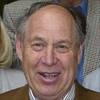
General properties of crystals and their cultivation, presentation of various (collected) crystals
Target group: Students, pupils, teachers and the school community, on request also young people from 7 years of age – Duration: 45 minutes (on request also 60-90 minutes)
General properties of crystals and their cultivation, presentation of various (collected) crystals
Target group: Students, pupils, teachers and the school community, on request also young people from 7 years of age – Duration: 45 minutes (on request also 60-90 minutes)
General properties of crystals and their cultivation, presentation of various (collected) crystals. With demonstrations and/or experiments
T arget group: Students, pupils, teachers and the school community, on request also young people from 7 years of age – Duration: 45 minutes (on request also 60-90 minutes)
Basics and applications
Target group: Students, teachers and the school community – Duration: 45 minutes
(with experiments). Only near Steinfurt, as experimental equipment has to be transported.
Target group: Students, teachers and the school community – Duration: 45 minutes
(possibly with demonstrations). Basics and applications
Target group: Students, teachers and the school community – Duration: 45 minutes
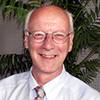
Water, the "elixir of life," is indispensable to the Earth: 70% of the Earth's surface is covered with water, organisms such as jellyfish consist of up to 99% water, and even humans carry 68% of their weight in this liquid. This moist "element" has many interesting properties. Using experiments, most of which are easy to perform at home, and video sequences, Dr. Gerhard Heywang, formerly of Bayer AG in Leverkusen, demonstrates various phenomena. Among other things, the course answers the following questions: Can you glue panels together with a drop of water that isn't even drop-shaped (!)? Why does a thermometer in ground ice show a temperature of around +2°C? Why do windows and mirrors fog up when you shower?
Duration: 90 minutes
Target group: High school classes and school community
A "Water"lecture designed for kindergarten or elementary school children. Which objects float in water and which sink? Experiments on surface tension, an imploding soda can, the superabsorbent material found in baby diapers, and the production of fizzy drinks will be demonstrated.
Duration: 45 minutes
Target group: Preschool children and elementary school students
How do our vocal cords work? Why do standing waves occur in a pipe that's open at both ends when you strike it with the flat of your hand? Why do sounds come out of a flute when you blow into it but not out of a garden hose? Can you still make music with a garden hose? Does a piano really only produce 88 notes? These and other questions about music and acoustics are entertainingly explored and explained using numerous simple experiments.
Duration: 70 minutes
Target group: High school classes and school community
Sparkling wine embodies concepts such as luxury, festivity, and enjoyment. Sparkling wine is a sparkling wine that is a must for celebratory occasions and special moments in life. This tradition came to Germany towards the end of the 18th century, along with the secret of the highly sensitive fermentation process. But how did sparkling wine actually come about, and which ingredients ultimately make it such a delicious beverage? Who would ever think that the pressure in a sparkling wine bottle is higher than that in a car tire? Experiments will be presented on the ingredients water, carbon dioxide, and ethanol.
Phenomena observed in sparkling wine are also relevant to technology and nature. Among other things, the Lake Nyos disaster (1,800 deaths and 30,000 animal slaughter) and cold geysers are discussed. The role of the silver spoon in supposedly preserving the quality of sparkling wine in an opened bottle in the refrigerator is also examined.
Duration: 70 minutes
Target group: High school classes and school community
Everyone has eaten an egg at some point – probably indulging in the pleasure without thinking about the interesting questions and valuable answers that eggs hold.
The experimental presentation addresses aspects of eggs and answers questions such as: Why do you need a lot of water in an egg cooker for a few eggs and a little water for many? Why are eggs shocked? Which way does the egg come out of the chicken? Which chickens lay white eggs and which lay brown eggs? What is the pigment in brown eggs? How can you tell if an egg is boiled or raw? How long does it take a chicken to produce 8g of protein for the egg? How long does it take for the shell to form? Are chickens stupid or smart? And much more.
Duration: Depending on your interests: 40, 60 or 80 minutes
Target group: Students of all ages and school community
Burning candles create a sense of celebration and evoke a sense of well-being. The lecture addresses the questions "Why do candles burn?" "What happens during combustion?" "How are candles made?" and presents playful experiments with candles, from the inexpensive Advent wreath to the one-dimensional Christmas tree and the candle swing.
Duration: Depending on your interests: 40, 60 or 70 minutes
Target group: Students of all ages and school community
In this experimental presentation, the world seems to be out of order: Can you blow up a balloon in a bottle? What does a bottle devil do and why? Corks fall onto a tabletop and stay upright. Metal discs refuse to fall into a shot glass. An unprepared ping-pong ball refuses to float on water. You have to see to believe that an erecting lens behaves differently with red and blue letters, otherwise you won't believe it. All of the experiments follow scientific laws that are explained in an understandable way and are surprising and entertaining. All involve air or components of air. Many of the experiments can be carried out at home using simple equipment.
Duration: 45 - 60 minutes
Target group: Kindergarten children from 5 years, students of all ages and school community
The tongue is a very versatile organ. It helps with speaking, swallowing, chewing, and many other activities in the mouth. The tongue is made up of nine different muscles, each of which can only contract, yet you can still stick the tongue out. How does that work? And how does it work when a chameleon can catapult its tongue out as long as its own body? In the lecture, test subjects will investigate how taste develops and which flavors can be perceived with the tongue. Does salt always taste salty, and is hot chili healthy? Who can roll their tongue? And what happens when you roll the R? All in all, it's about the chemistry and physics of the mouth.
Duration: 60 min
Target group: Students aged 10 and over from all school types and school communities
A raindrop is round – no, almost round! It looks like a bread roll from the side. There are also round drops if they are small enough. There are also drops that are hemispheres; for example, on a window pane. The shape referred to in German as a “drop shape” occurs in art and advertising, but is very rare in practice. Examples will be demonstrated. Water droplets with extremely unusual shapes play a very important role in sandcastle building, and this is why sandcastles remain standing for a considerable time after they have been built. Extremely unusual droplets will be demonstrated: water with cornstarch forms a “slurry” which enables particularly unusual droplets. There are also coffee drops, wine drops, honey drops, and very special “nervous” drops that a theologian first understood and described.
Duration: 60 min
Target group: Students aged 10 and over from all school types and school communities
During photosynthesis in plants, carbon dioxide reacts with water in sunlight. This produces oxygen and carbohydrates. A small proportion of the carbohydrates are low-molecular-weight sugars. A much larger proportion is starch, and the majority are cellulose chains, the structural substance of all plants. Sugar is found in varying amounts in flowers (nectar), branches and plant stems, and roots. Aphids also secrete sugary solutions, and in mammals, galactose (lactose) is produced in breast milk to nourish their offspring. The experiments involve honey and table sugar.
Duration: 60 - 70 min
Target group: High school classes and school community
RWTH Aachen University
Institute of Materials for Electrical Engineering II
D-52056 Aachen
Rainer Waser
Perspectives of chemistry on the way to nano-electronics | Target group: Students, teachers and the school community |
Sugary chemistry – experiments from glucose to starch | Experimental lecture Target group: Students, teachers and the school community |
Highlights from everyday chemistry – experiments with supermarket products | Experimental lecture Target group: Students, teachers and the school community |
Healthy ingredients in fruit and vegetables – made visible in experiments | Experimental lecture Target group: Students, teachers and the school community |
Cosmetic products and food products often gain their originality and individual profile from their special scents and aromas, which are composed again and again by highly paid perfumers and flavourists like works of art. The basic principles that are assumed, the historical references that are attractive, the chemistry and mechanisms that are underlying them, the variety of materials and the overlaps that apply to the two large product groups are illustrated in an overview with examples for every level of knowledge.
Target group: Students, especially those taking advanced MINT courses, science teachers, school community, interested scientists, especially chemists
Duration: 45 minutes
It is presented how residue-free products can be obtained after medicinal treatment in aquacultures, which are particularly at risk of infection due to their high fish density. Experimental test results now give nickel-sensitive allergy sufferers safety compared to conventional stainless steel cooking pots, the alloy of which contains 8% nickel, among other things.
It will be presented how fractionated milk fats can be incorporated into ice cream glazes without affecting their melting and crystallization behavior - and how these defined milk fat fractions can be produced cost-effectively using supercritical carbon dioxide. It will also be clear what advantages and analytical reliability near-infrared spectrometry offers, e.g. in the ongoing production control of foodstuffs, and what is more, how it can replace complex wet chemical analyses. Finally, it will be about the health-relevant glucosinolates and their biomarkers in broccoli and other cruciferous vegetables.
Target group: Students, especially those taking advanced MINT courses, science teachers, school community, interested scientists, especially chemists
Duration: 45 minutes
Fracking – cheap energy with dire consequences? | Target group: science teachers, especially at MINT schools, students, especially those taking advanced science courses, chemistry teacher training centres, GDCh local sections, JCF regional sections Duration: 45-60 minutes |
Chemistry of the cell – life or death | Target group: Students, teachers and the school community Duration: approx. 60 minutes |
Chemistry of the cell – cross-border molecular transport | Target group: Students, teachers and the school community Duration: approx. 60 minutes |

Biotechnological methods and process steps (enzymes, microorganisms, cell cultures) are increasingly being used to produce enantiomerically pure active ingredients. These processes are an important part of "green chemistry," and even some basic organic chemicals can be produced economically using biotechnology.
Duration: 45 minutes
Target group: teachers, high school students, chemists, biologists, pharmacists
The development of new drugs and galenic formulations is becoming increasingly time-consuming, expensive and risky, and thus an uncertain financial adventure. How is the pharmaceutical industry preparing for this?
Duration: 45 minutes
Target group: (Young) chemists, pharmacists, physicians, biologists, teachers, high school students
The pharmaceutical industry is currently under great pressure due to patent expiration of many blockbuster drugs and the resulting competition from generics, declining productivity in research and development, cost-cutting measures in many countries, increasing approval requirements and a poor public image. What will and must change?
Duration: 45 minutes
Target group: Natural scientists, medical professionals, students, teachers and high school students
The need for new and better medicines will (have to) continue to rise due to demographic developments. The major challenges currently are dementia/Alzheimer's disease, resistant bacterial pathogens, certain types of cancer, rare diseases ("orphan diseases") and chronic diseases that so far only respond to medication in some patients and can only be treated symptomatically. There is no other field of work that is as multi- and interdisciplinary as modern drug research and development.
Duration: 45 minutes
Target group: Natural scientists, medical professionals, students, teachers and high school students

Dr. Roland Full
Hanns Seidel High School Hösbach
Mozartstrasse 35
D-63768 Hösbach
Roland Ful l
Dr. Werner Ruf
Celtis High School Schweinfurt
Sonnenstrasse 52 b
D-97456 Dittelbrunn
Werner Ruf
In their experimental show, which is unique in the world, the chemists Dr. Roland Full and Dr. Werner Ruf Chemistry at its best, which also fascinates non-chemists. With self-painting chemical images that are placed in petri dishes and displayed on a large screen, they allegorically describe seasonal change. The 17 live experiments are accompanied only by music, which reinforces the mood of the images and takes the viewer on a flight of imagination.
Target group: school community – duration: 60 minutes
Science and art: companions and sisters in spirit | Target group: School community, especially for students of advanced science courses and students of advanced art courses Duration: 45 – 60 minutes |

Planning, construction and operation of laboratory facilities for a scale-up of chemical reactions using the example of the production of sulphuric acid, iron and foodstuffs
Target group: Chemistry teachers in general and vocational schools
Characteristics of scientific professions in the chemical industry
Target group: Teachers of general education schools, especially grades 9 and 12
Biological, chemical and physical experiments for preschool children
Target group: Educators
Didactic and methodical integration of the presentation of large-scale chemical processes into teaching
Target group: Chemistry teachers in general and vocational schools
The largest deposits of lithium are found in the Andes of Latin America. The rare metal lithium has become increasingly important in recent decades due to mobile electronic devices such as smartphones, laptops and, above all, electric cars. Lithium occurs on earth in so-called salars as brine and in ore deposits in the form of pegmatite. The brines are processed by water evaporation and precipitation due to the different solubilities of the salts found in the lakes. The lithium carbonate obtained in technical quality can be filled into bags, shipped and easily processed further. The most important application of lithium is the lithium-ion battery. Lithium itself is produced from lithium chloride using molten salt electrolysis. Will lithium deposits be sufficient in the future? It is therefore important to develop technologies to recycle raw materials. There are now interesting developments, one from Evonik will be presented at the end.
Target group: Pupils at the end of secondary school (9th (G8) or 10th grade (G9)) and upper school, E-phase. - Duration: 60 min
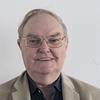
Diabetes is a widespread disease. Approximately 10% of the world's population suffers from this condition. The causes, long-term effects, and treatment options for the disease are presented. Using the example of the production of human insulin and insulin analogues, the contribution that biotechnology, particularly genetic engineering, can make to the treatment of diabetes is demonstrated. The fundamentals of protein biosynthesis are explained in a manner that is generally understandable.
Target group: Students and teachers of advanced science courses and upper secondary school as well as the school community, chemistry teacher training centers, young chemists' forums, adult education centers - Duration: 75 to 90 min
Using the isolation of antibiotics, plant compounds, and vitamins as examples, the contribution nature makes to the discovery of new drugs is demonstrated, as well as how these active ingredients can be specifically modified through semisynthesis. The difference between prokaryotic and eukaryotic cells is explained, and the advantages of using a cell to produce active ingredients are discussed. Natural substances such as morphine, cocaine, atropine, artemisinin, penicillins, and insulins and their significance for the treatment of diseases are presented.
Target group: Students and teachers of advanced science courses and upper secondary school as well as the school community, chemistry teacher training centers, young chemists' forums, adult education centers - Duration: 75 to 90 min
Many pharmaceutical substances (antibiotics, monoclonal antibodies, substances involved in the blood coagulation cascade, etc.) are now obtained through fermentation. The methods and procedures used in downstream processing to isolate and purify pharmaceutical active ingredients from fermentation broths are demonstrated. The basic principles of extraction, chromatography, cell disruption, and solid-liquid separation, as well as freeze-drying and spray-drying, are presented.
Target group: Students and teachers of advanced science courses and upper secondary school, as well as chemistry teacher training centers, young chemists' forums - Duration: 75 to 90 min
Chromatography plays an important role in the isolation and purification of pharmaceutical active ingredients using biotechnology or genetic engineering, both in basic and ultra-high purification. The fundamentals of chromatographic methods are presented. The scale-up and scale-down of such methods are discussed.
Target group: Students and teachers of advanced science courses and upper secondary school, as well as chemistry teacher training centers, young chemists' forums - Duration: 75 to 90 min
The fundamentals and applications of white, red, and green biotechnology for the industrial production of substances are presented. Particular emphasis is placed on selected enzymatic-chemical reactions for the production of active pharmaceutical ingredients.
Target group: Students and teachers of advanced science courses and upper secondary school, as well as chemistry teacher training centers, young chemists' forums - Duration: 75 to 90 min
The use of homeopathy, anthroposophical medicine, Bach flower therapy, and Schuessler salts for the treatment of illnesses is presented. The placebo and no-placebo effects are explained. Mistletoe therapy for cancer is discussed in more detail. Animal-assisted therapy forms are also reported. Pavlov's conditioning experiments are discussed in detail.
Target group: Students and teachers of advanced science courses and upper secondary school as well as the school community, chemistry teacher training centers, young chemists' forums, adult education centers - Duration: 75 to 90 min
The influence of small chemical molecules [carbon dioxide, uranium dioxide, nitrogen monoxide, nitrous oxide, oxygen, ozone, water, ethanol, methanal (formaldehyde)] on human everyday life is the subject of this lecture.
Target group: Students and teachers of advanced science courses and upper secondary school as well as the school community, chemistry teacher training centers, young chemists' forums, adult education centers - Duration: 75 to 90 min
Sugar, protein, nucleic acid and fat molecules and their physiological and therapeutic significance are presented.
Target group: Students and teachers of advanced science courses and upper secondary school as well as the school community, chemistry teacher training centers, young chemists' forums, adult education centers - Duration: 75 to 90 min
Molecules such as morphine, cocaine, caffeine, ethanol, and others are introduced, along with their influence on the music scene in particular. Natural and synthetic drugs, as well as viable approaches to drug control, are also discussed. Addiction and addiction control are also discussed.
Target group: Students and teachers of advanced science courses and upper secondary school as well as the school community, chemistry teacher training centers, young chemists' forums, adult education centers - Duration: 75 to 90 min
The lecture will demonstrate how information can be transmitted using a chemical formula and its spatial structure. It will also discuss how the genetic code is created and the role that amino acid sequence plays in the properties of proteins and enzymes.
Target group: Students and teachers of advanced science courses and upper secondary school as well as the school community, chemistry teacher training centers, young chemists' forums, adult education centers - Duration: 75 to 90 min
The term “serendipity” is explained and examples are given of how chance, rather than deliberate searching, played a key role in many discoveries (sticky notes, dynamite, Velcro, the effects of pharmaceuticals, vulcanization, credit cards, and many more).
Target group: Students and teachers of advanced science courses and upper secondary school as well as the school community, chemistry teacher training centers, young chemists' forums, adult education centers - Duration: 75 to 90 min
The history and development of the Periodic Table of Elements (PSE) are covered; newer elements and their discovery are introduced. Selected examples illustrate how the position of an element in the periodic table allows conclusions to be drawn about its physical and, above all, its chemical properties. The key role of an element's electron configuration (structure of the atomic shell) on its properties is discussed. The oblique relationships in the PSE are addressed. The typical properties of metals, metalloids, and nonmetals are presented.
Target group: Students and teachers of advanced science courses and upper secondary school as well as the school community, chemistry teacher training centers, young chemists' forums, adult education centers - Duration: 75 to 90 min
The biographies of selected female scientists (Curie, Meitner, Immerwahr, Kwolek, and others) will be presented, and the important contributions many female scientists have made to their field will be discussed, although these contributions have not always received the recognition and appreciation they deserve from the scientific community. Nobel Prize-winning women will also be honored in this presentation. Furthermore, female scientists who have pursued Career outside their fields in art and politics (Adorno, Hamm-Brücher, Merkel, Schwätzer, Thatcher, and others) will be presented.
Target group: Students and teachers of advanced science courses and upper secondary school as well as the school community, chemistry teacher training centers, young chemists' forums, adult education centers - Duration: 75 to 90 min
The biographies of scientists in physics, chemistry, the life sciences, and medicine are presented. They were creative and made groundbreaking inventions, but whose achievements were not always duly recognized. These "unlucky" individuals also include highly respected researchers who, for example, were overlooked for the Nobel Prize. Often, such individuals were misunderstood, even ostracized, in their time, and only much later were their ideas realized for the benefit of society. The differences between inventing, developing, creating, and discovering are discussed in more detail.
Target group: Students and teachers of advanced science courses and upper secondary school as well as the school community, chemistry teacher training centers, young chemists' forums, adult education centers - Duration: 75 to 90 min
The causes of pain and their treatment options are explained. Phenomena such as "paradoxical pain" (analgesic pain) and "phantom pain" are discussed. Painkiller dependence is discussed. General aspects of addiction are presented. The physiological processes of pain conduction are addressed.
Target group: Students and teachers of advanced science courses and upper secondary school as well as the school community, chemistry teacher training centers, young chemists' forums, adult education centers - Duration: 75 to 90 min
The book presents how Ascania Sobrero discovered nitroglycerin by chance and how Alfred Nobel developed dynamite. The importance of dynamite in the construction of roads, tunnels, and railway lines in the last century is illustrated using examples (such as the Gotthard Tunnel). It also describes how Nobel Foundation funds are used today to award prize money for the highest scientific honor—the Nobel Prize. The use of nitroglycerin and its derivatives in medicine for the treatment of angina pectoris is also discussed.
Target group: Students and teachers of advanced science courses and upper secondary school as well as the school community, chemistry teacher training centers, young chemists' forums, adult education centers - Duration: 45 to 60 min
Against the backdrop of a possible cannabis legalization, which is presented in detail, the abuse of drugs (morphine, heroin, cocaine, mescaline, kath, etc.) and stimulants (alcohol, nicotine, caffeine) as well as the development of addiction, including dependence on pharmaceuticals (amphetamines, fentanyl derivatives, benzodiazepines), are addressed. Using well-known artists as examples, the impact of drugs and addiction on quality of life is demonstrated. Pathways to treatment and prevention are presented.
Target group: Students and teachers of advanced science courses, as well as middle and high school students, the school community, chemistry teacher training centers, young chemists' forums, adult education centers, and related educational institutions. - Duration: 75–90 minutes
The most important plastics, their applications, and properties are presented. Some basic concepts of polymer chemistry are explained. Given the growth of the world's population and the basic needs of people, it is explained why we cannot do without plastics – despite some disadvantages. The health risks posed by PFAS are highlighted, and ocean pollution is addressed. The problems of micro- and nanoplastics are discussed.
Target group: Students and teachers of advanced science courses and upper secondary school, as well as the school community and extracurricular educational institutions, chemistry teacher training centers, young chemists' forums - Duration: 60 minutes
Numerous examples show why glass is such a fascinating material and building material.
Starting with natural glasses (tektites, obsidians), the different types of glass are discussed and the history
of glass production from antiquity to modern times is presented. A large amount of space is devoted to the presentation of the chemical
Composition of glasses and explanation of the typical characteristics of oxide glasses as amorphous solids.
Various oxide glasses (Thuringian glass, Murano glass, safety glass, optical glasses, “fireproof” glass, glass ceramics”),
etc.) are addressed. The recycling of waste glass is discussed.
Target group: Students and teachers of advanced science courses as well as middle and high school students, the school community,
Chemistry teachers at continuing education centers, adult education centers, and related educational institutions. Duration: 60–75 minutes

E-Mail: Senior Expert Chemists
The development of chemical-pharmaceutical chemistry is closely linked to dye development and is also an industrial innovation driver. Global competition for our chemical site is a constant challenge for new products and problem solutions. One example of the successful implementation of a new concept of color and function is effect pigments. In addition to classic absorption and metallic pigments, these combine shimmering, bright colors with attractive gloss effects. They are based on the natural model of mother-of-pearl, mineral or structural colors. As multi-layer pigments, they are accessible on a large scale through an intelligent combination of simple, technical and chemical processes and are increasingly being used as functional materials.
Target group: Students, teachers and the school community – Duration: 45-60 minutes
Target group: Science teachers, students of advanced science courses – Duration: 60 minutes
Target group: Students, teachers and the school community – Duration: 60 minutes
Target group: Students, teachers and the school community – Duration: 45-60 minutes
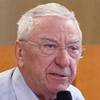
The history and development of the term "sustainable" are presented and the causes of the disrupted carbon cycle are discussed. In addition, facts about the climate, the misguided path of biofuels, climate engineering, the remediation of the atmosphere through geostorage of wood and the carbon moratorium are addressed and discussed.
Target group: Students and teachers of advanced science courses and upper secondary schools as well as the school community, chemistry teacher training centres, young chemists’ forums, adult education centres – Duration: 60 to 75 minutes
Rockwood Lithium GmbH
Hoechst Industrial Park
Building 879
D-65926 Frankfurt
Peter Rittmeier
lithium | Target group: the lecture can be adapted to the target group; upper intermediate and advanced level |
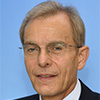
Industrial organic chemistry is a complex, flexible network that has developed over a period of more than 150 years and is still constantly evolving. A limited number of basic and intermediate products are produced from a few raw materials, each of which is the starting point of value chains leading to a large number of end products. Using propene as an example, the lecture shows how one gets from crude oil to superabsorbents or emulsion paints.
Target group: Students and teachers of advanced science courses and upper secondary schools as well as the school community, chemistry teacher training centres, young chemists’ forums, adult education centres – Duration: 45 to 60 min
Catalysts are substances that lower the activation energy of a reaction system so that the desired reaction can proceed at high speed. Their high selectivity results in a low amount of by-products - which is not only an economic advantage, but also protects our environment. Homogeneous catalysts are soluble metal complexes whose activity and selectivity can be tailored to the desired product. The lecture gives examples of industrially used, highly selective processes both for large-volume products (e.g. acetic acid) and for specialties such as optically active compounds for pharmaceuticals (e.g. the Parkinson's drug L-DOPA).
Target group: Students and teachers of advanced science courses and upper secondary schools as well as the school community, chemistry teacher training centres, young chemists’ forums, adult education centres – Duration: 45 to 60 min
Chemical products are omnipresent in our everyday lives. Examples include packaging, pharmaceuticals, cosmetics, pesticides, detergents, textiles and much more. The basis for this diversity is organic chemistry, whose products are omnipresent in our everyday lives. But inorganic materials also have a decisive influence on our lifestyle. They are the basis for high-tech products such as flat screens, solar cells, smartphones, computers and high-performance batteries. We need raw materials for all of these products, and they are finite. As the lecture shows, by improving our processes we can use new raw materials and also make better use of the raw materials we have used so far, including through new material cycles.
Target group: Students and teachers of advanced science courses and upper secondary schools as well as the school community, chemistry teacher training centres, young chemists’ forums, adult education centres – Duration: 45 to 60 min
Carbon dioxide is the carbon carrier of our planet. Photosynthesis/sunlight created all naturally occurring organic compounds, including fossil fuels. Even though carbon dioxide is an extremely low-energy molecule, it can still undergo chemical reactions. However, this requires high-energy reaction partners such as hydrogen, ethylene oxide or ammonia. The lecture will present established syntheses using carbon dioxide as well as new ones that are currently being developed. These include very large-volume syntheses of fuels (e-fuels). However, their need for (sustainable!) energy is enormous.
Target group: Students and teachers of advanced science courses and upper secondary schools as well as the school community, chemistry teacher training centres, young chemists’ forums, adult education centres – Duration: 45 to 60 min
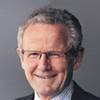
Following the motto "Use numbers, not adjectives", the lecture places the political discussion about renewable energies and climate change in the context of the dimensions of our current energy system. Access to affordable energy sources has driven the development of human societies in the past. Standard of living and per capita consumption of primary energy correlate significantly, but the values vary considerably.
The targets for reducing greenhouse gas emissions are most likely only realistic if the replacement of fossil primary energy with renewable (solar) Literature is combined with a much more efficient use of energy. The latter is not only a technical issue, but also a social and behavioral one.
Duration: 45-60 minutes
Target group: Students, especially MINT students and students of MINT advanced courses, science teachers, school community, adult education centers, chemistry teacher training centers, SEC (for science forum, annual meeting, SEC lecturer)
The chemical industry in Germany currently has a share of around 5% of the world market. Its carbon-containing products are mainly made from oil (72%) and gas (14%). At least 13% of the products are based on renewable raw materials. Coal plays practically no role at less than 2%. In total, the German chemical industry uses around 20 million tons of organic raw materials and the same amount of inorganic raw materials such as table salt.
The raw materials of the chemical industry have been and are constantly being adapted. At the beginning of the 19th century, wood was the raw material. Later, coal changed the entire industry and growth accelerated. After 1945, oil became the globally dominant raw material. Currently, however, coal is (again) gaining importance in China and especially in the USA.
The future of raw material supplies will therefore be more diverse than in the past; there will no longer be a single dominant global raw material. Instead, there will be a much greater regional diversification of raw materials. This will require globally active companies such as BASF to significantly broaden their technology portfolio.
Duration: 45-60 minutes
Target group: Students, especially MINT students and students of MINT advanced courses, science teachers, school community, adult education centers, chemistry teacher training centers, SEC (for science forum, annual meeting, SEC lecturer)
Catalysts play a central role in the processes of the chemical industry. Both the raw materials and the energy requirements of processes depend crucially on the quality of the catalysts used.
The development of such products is an extraordinarily diverse and challenging task. To master it, one must master a large number of technical disciplines. A technical catalyst is much more than an "active center" and is often the result of a balanced compromise between several actually contradictory target variables.
The lecture highlights these aspects and uses a concrete example to show the unconventional results that such a development process can lead to.
Duration: 45-60 minutes
Target group: Students, especially MINT students and students of MINT advanced courses, science teachers, school community, adult education centers, chemistry teacher training centers, SEC (for science forum, annual meeting, SEC lecturer)
The chemical industry in Germany currently has a share of around 5% of the world market. Its carbon-containing products are mainly made from oil (72%) and gas (14%). At least 13% of the products are based on renewable raw materials. Coal plays practically no role at less than 2%. In total, the German chemical industry uses around 20 million tons of organic raw materials. The chemical industry is an energy-intensive sector, the most important energy sources are gas and electricity.
The raw materials of the chemical industry have been and are constantly being adapted. At the beginning of the 19th century, wood was the raw material. Later, coal changed the entire industry and growth accelerated. After 1945, oil became the globally dominant raw material. Currently, however, coal is (again) gaining importance in China and gas in particular in the USA. The lecture will explain the criteria used to select the raw material base at different locations. Technical processes for using all raw materials are known.
On a global scale, the chemical industry is the third largest industrial emitter of CO 2 after steel and cement, with a share of 8%. The key to reducing this share will be the availability of "green" electricity and hydrogen without an atmospheric CO 2 backpack. Increasing the amount of carbon used from renewable raw materials is reaching ecological limits.
Duration: 60 minutes
Target group: Students, especially MINT students and students of MINT advanced courses, science teachers, school community, adult education centers, chemistry teacher training centers, SEC (for science forum, annual meeting, SEC lecturer)
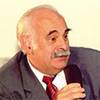
Genetic engineering – what is it? How does it work? | All lectures by Jany: Target group: Students of advanced science courses, science teachers, school community, chemistry teacher training centers Duration: 45-60 minutes |
Genetic engineering in everyday life |
so |
Genetically modified foods – opportunities and risks | so |
Green genetic engineering – opinion formation in discourse | so |
Ecotoxicology – conventional and genetically modified plants | so |
From Mendel to modern plant breeding | so |
Food of the future – Novel Foods |
so |
Food intolerances – allergies and pseudoallergies |
so |
Institute for inorganic chemistry
University of Erlangen-Nuremberg
Egerlandstrasse 1
D-91058 Erlangen
Horst Kisch
Solar catalysis - gentle chemistry with air and sun |
Target audience: students, teachers and the school community |
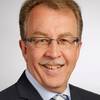
No other element allows for such a wide range of reaction possibilities as carbon. Beyond organic chemistry with its main protagonist carbon, carbon can even be found in space as diamond (unfortunately difficult to access) but also in the soil as a fossil fuel, coal. Technical progress in materials science is often linked to our record-breaking properties (e.g. electrical current density [109 A/cm²] ─ 100 times higher than copper). The example of carbon shows how scientific findings can stimulate technology and the economy: the basis of the chemical industry!
Carbon in the atmosphere also influences the temperature through CO 2 and soot particles. The magnitude of the effect is controversial, however. After the lecture , everyone knows: carbon is a more valuable material than gold!
Target group: Students from MINT schools, especially from MINT advanced courses; science teachers, school communities, support associations, adult education centers, chemistry teacher training centers, SEC (annual meeting, science forum, SEC lecturer) - Duration: 45-60 minutes
Heating with carbon is nothing unusual. Any coal-fired stove provides a good example. But you can also use the carbon for heating without burning it if you put electricity into it. Imagine a carbon dispersion that you paint onto the wallpaper like wall paint with a lambskin roller, connect it to the right and left with a copper strip and apply a voltage. Why does this have a different effect on our bodies than normal radiators? What other interesting things can you do with a "paintable" heater?
lecture with a short demonstration
Target group: Students from MINT schools, especially from MINT advanced courses; science teachers, school community, support associations, adult education centers, chemistry teacher training centers, SEC (annual meeting, science forum, SEC lecturer)
Duration: 45-60 minutes
When nature needs stable structures, it does not create "bulwarks," but uses the combination of materials of varying density and strength, mostly with fibrous components. Wood is a typical example of this. But why is this combination of materials so important? Why does a pane of glass break when bent, but fiberglass does not? Also interesting: why are airplanes mostly made of fiber composite structures and cars almost not at all?
lecture with exhibits
Target group: Students from MINT schools, especially from MINT advanced courses; science teachers, school community, support associations, adult education centers, chemistry teacher training centers, SEC (annual meeting, science forum, SEC lecturer)
Duration: 45-60 minutes
Management theory insists that only with an investment calculation can a company successfully move into the future. Even the layman can see from various press reports that new plants or company acquisitions have not achieved the expected success despite an investment calculation. It is therefore interesting to find out what the calculation can do and where its limits are. Because there is always a risk that often pales behind grandiose promises.
Target group: Students from MINT schools, especially from MINT advanced courses; science teachers, school community, support associations, adult education centers, chemistry teacher training centers, SEC (annual meeting, science forum, SEC lecturer)
Duration: 45-60 minutes
After reading Wikipedia about "greenhouse gas" you think you understand how CO 2 works in the atmosphere. However, what is surprising is the statement that it contributes between 9% and 26% to the greenhouse effect, although the global concentration differences are very small in contrast to water vapor!
Using the relatively simple Lambert-Beer photometry equation and spectroscopy data from the Internet (e.g. from HITRAN.org), you can calculate in Excel that the greenhouse effect of CO 2 is at least 26% - however, the total greenhouse effect is much, much smaller than generally stated. (Is this effect really comparable to the greenhouse?)
You don't have to be a "climate expert" to understand the lecture . Knowledge of mathematics and physics from a high school level is sufficient.
Target group: Students from MINT schools, especially from MINT advanced courses; science teachers, school community, support associations, adult education centers, chemistry teacher training centers, SEC (annual meeting, science forum, SEC lecturer)
Duration: 45-60 minutes
The time for dealing with materials mindlessly is slowly coming to an end. This is very positive in many respects. But is the damage caused by plastic waste and microplastics, which has been shown to be a threat, a legitimate justification for this? What is the truth behind "plastic on the plate" and how do we find the huge islands of plastic waste in the Pacific?
Target group: Students from MINT schools, especially from MINT advanced courses; science teachers, school community, support associations, adult education centers, chemistry teacher training centers, SEC (annual meeting, science forum, SEC lecturer)
Duration: 45-60 minutes
The highest form of energy efficiency is usually not having to convert energy. But when we do convert energy, it is usually for movement or for heat Management (heating, cooling). In moving bodies, the energy "consumption" depends on their mass, which is why lighter materials are preferable; does this really always apply? The first choice for efficient heat utilization is foam-like materials. But not only that!
Target group: Students from MINT schools, especially from MINT advanced courses; science teachers, school community, support associations, adult education centers, chemistry teacher training centers, SEC (annual meeting, science forum, SEC lecturer)
Duration: 45-60 minutes
This page has been machine translated. If you have any feedback or comments please feel free to contact us. 
last modified: 24.07.2025 15:29 H from Translator